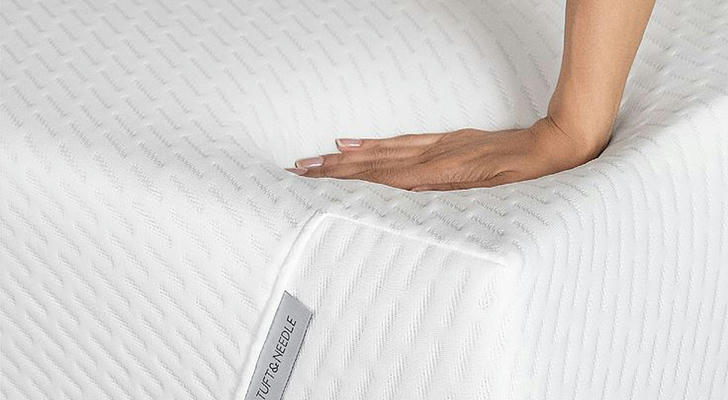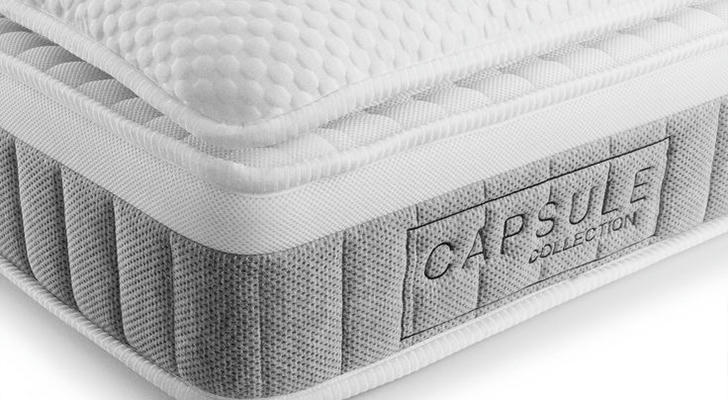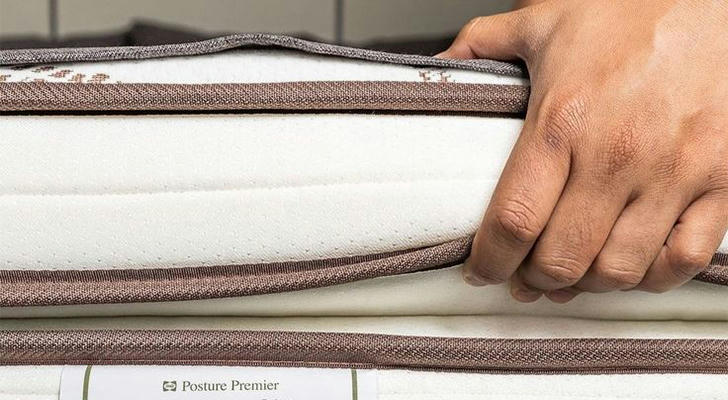Memory Foam vs. Latex Mattresses: Which One is Better for Your Sleep Needs?

In today's fast-paced world, getting high-quality sleep has become increasingly important. People are placing more emphasis on their sleep quality, and choosing the right mattress has become a key step in improving the sleep experience. Among the various types of mattresses, memory foam and latex mattresses are some of the most popular choices due to their comfort and support. However, these two types of mattresses have different characteristics and cater to different sleep needs. This article will delve into the advantages and disadvantages of each, helping you find the mattress that best suits your sleep requirements.

I.Key Differences Between Memory Foam and Latex Mattresses
1. Comfort and Support: Deep Contour vs. Elastic Support
Memory Foam: Memory foam mattresses are renowned for their excellent contouring ability, gradually molding to the shape of your body based on your body heat. This "hugging" sensation effectively reduces pressure points, making it particularly suitable for those with shoulder or lower back pain. The slow rebound of memory foam provides great comfort, but it can also restrict some people's movement during sleep.
Latex Mattresses: Latex mattresses offer more elastic support. While they also conform to the body's curves to a certain extent, they don't create the deep sinking feeling of memory foam. The quick responsiveness of latex makes it ideal for those who frequently change positions during sleep, and its even support helps maintain the natural curvature of the spine, making it a good choice for those who prefer a slightly firmer mattress.
2. Temperature Regulation: Warm Embrace vs. Cool Sleep
Memory Foam: Due to its high density, memory foam tends to absorb and retain heat, which may cause some people to feel too warm during sleep. Although modern memory foam mattresses often incorporate cooling gels or breathable structures to improve heat dissipation, memory foam may still not be the best choice for those who tend to feel hot while sleeping.
Latex Mattresses: Latex mattresses have natural breathability, with an open-cell structure that allows air to circulate freely, effectively reducing the likelihood of feeling overheated during sleep. For those with higher body temperatures or living in warmer climates, latex mattresses provide a cooler sleep experience.
3. Durability and Longevity: Gradual Softening vs. Lasting Elasticity
Memory Foam: High-quality memory foam mattresses typically last between 7 to 10 years, but over time, they may develop indentations in areas where the body applies pressure, affecting overall support and comfort. The durability of memory foam largely depends on its density and material quality.
Latex Mattresses: Latex mattresses are known for their high elasticity and durability, often lasting over 10 years. Natural latex mattresses are particularly durable, maintaining their original shape and support for a long time, with little risk of developing noticeable indentations. This makes latex mattresses a better choice for consumers looking for a long-term investment.
4. Environmental and Health Considerations: Synthetic Materials vs. Natural Substances
Memory Foam: Memory foam is typically made from polyurethane, a synthetic material. Although many manufacturers have started using more eco-friendly production processes and materials, such as adding plant-based oils, memory foam is still less environmentally friendly than natural latex. Additionally, lower-quality memory foam mattresses may emit chemical odors, which could be a concern for sensitive individuals.
Latex Mattresses: Natural latex mattresses are made from the sap of rubber trees, a renewable and biodegradable material. Natural latex is not only environmentally friendly but also has natural antimicrobial and dust mite-resistant properties, making it especially beneficial for people with allergies. However, consumers should ensure that the latex mattress they purchase is truly made from natural latex and not synthetic latex.

II. Real Case: Ms. Wang’s Mattress Selection Journey
Background: Ms. Wang is a 40-year-old company manager who has suffered from lower back pain due to long-term work stress. She wanted to improve her sleep quality by changing her mattress, but she felt confused when faced with the choice between memory foam and latex mattresses.
Selection and Experience: Ms. Wang first chose a memory foam mattress and was initially very satisfied with the contouring feel, which greatly relieved the pressure on her lower back. However, as summer arrived, Ms. Wang began to feel that the mattress was too warm, often waking up due to the heat at night. She then tried a latex mattress. Although the initial "hugging" sensation wasn't as strong as with memory foam, the latex mattress's coolness and support allowed her to maintain comfortable sleep even on hot summer nights.
Conclusion: In the end, Ms. Wang opted for the latex mattress and purchased a memory foam pillow for her office naps. She found that the latex mattress better suited her sleep needs, while the memory foam pillow was an excellent aid for rest during work breaks.

III. How to Make the Right Choice?
1. Sleep Position and Comfort Needs
Memory Foam: Ideal for side sleepers, those with back pain, or those who prefer an immersive sleep experience.
Latex: Suitable for back, stomach, or frequent movers during sleep, and those who prefer more support.
2. Temperature Sensitivity
Memory Foam: Best for those who don't easily overheat or live in cooler climates.
Latex: Ideal for those who sweat easily or live in warmer climates.
3. Environmental Awareness and Health Concerns
Memory Foam: Suitable for those less concerned with material sustainability or not sensitive to synthetic odors.
Latex: Perfect for those seeking natural, eco-friendly materials or sensitive to chemicals.
4. Budget and Durability
Memory Foam: Generally more affordable but may require more frequent replacements.
Latex: While the initial cost is higher, its durability may offer better long-term value.
IV. Conclusion
Choosing the right mattress is a crucial step in improving sleep quality. Memory foam and latex mattresses each have their pros and cons, catering to different sleep needs. Memory foam offers deep contouring and pressure relief, while latex mattresses are known for their breathability and elastic support. When making your final decision, consider your sleep position, temperature sensitivity, environmental awareness, and budget. By combining these factors with real-life experience, you can find the mattress that best suits your needs, ensuring a restful night's sleep every night.
